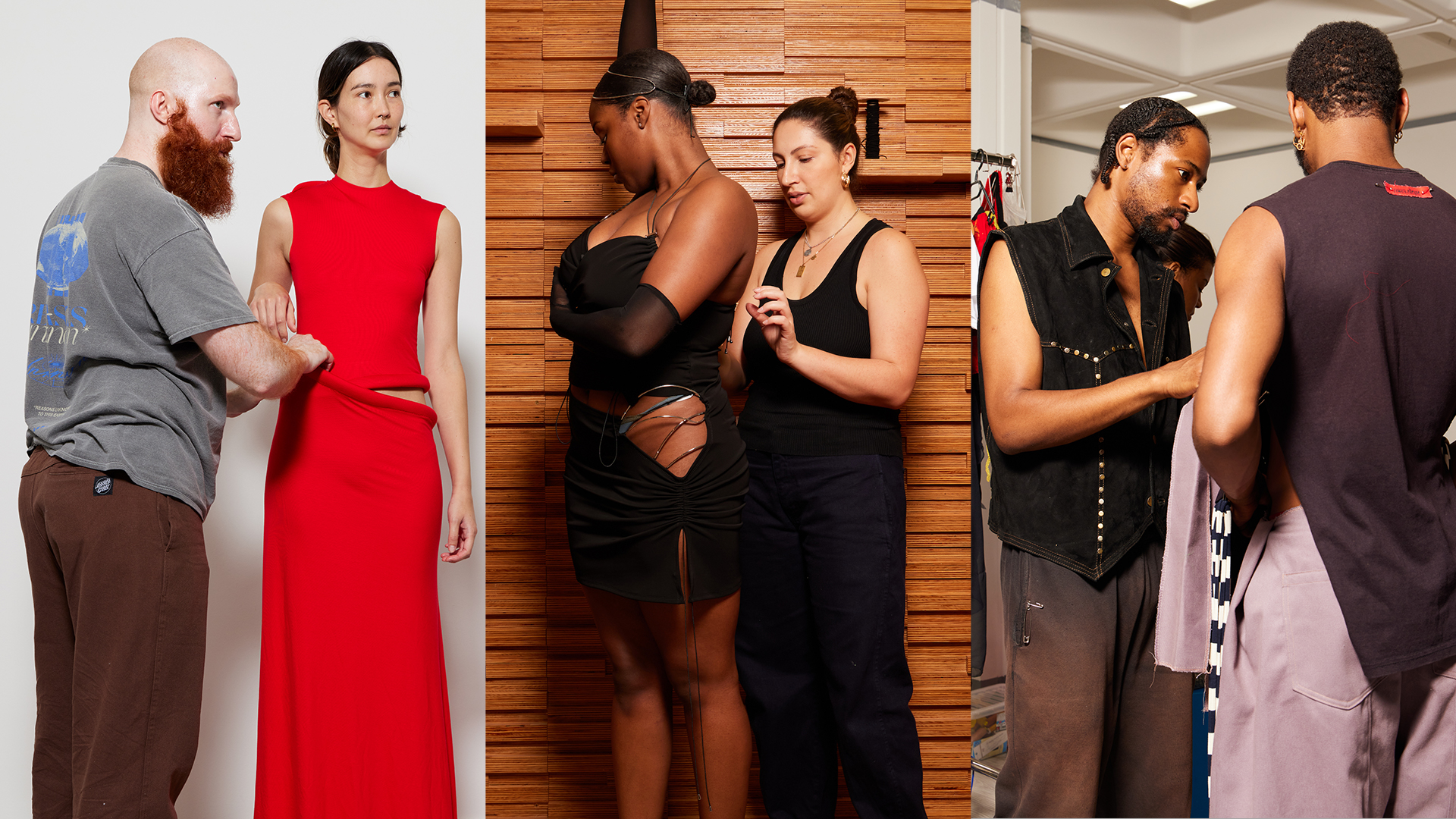We’ve said it plenty of times before, but we’ll say it again. London’s fashion ecosystem would look a hell of a lot different if it weren’t for Fashion East — and not in a good way. The talent incubator, founded by Lulu Kennedy in 2001 has, over the years, cemented its reputation as the place to look to for a temperature check on what’s hot in fashion — not just in Britain, but the world!
As bold a claim as that may sound, Lulu and the gang have the credentials to back it up. Over the past two decades, Fashion East has nurtured some of the industry’s most celebrated names — from Gareth Pugh, Kim Jones and Jonathan Anderson to Simone Rocha, Grace Wales Bonner, KNWLS and many, many more.
For this season’s show, which took place earlier today in the cavernous Mills Fabrica complex in King’s Cross, two new names — Karoline Vitto and Standing Ground — joined the Fashion East line-up, with Jawara Alleyne showing his fourth and final collection before fledging the fold. Ahead of their shows, joined by photographer Henry Mills, we stopped by each of the designer’s fittings sessions for an intimate preview of their collections and a behind-the-scenes peek into their innovative processes.

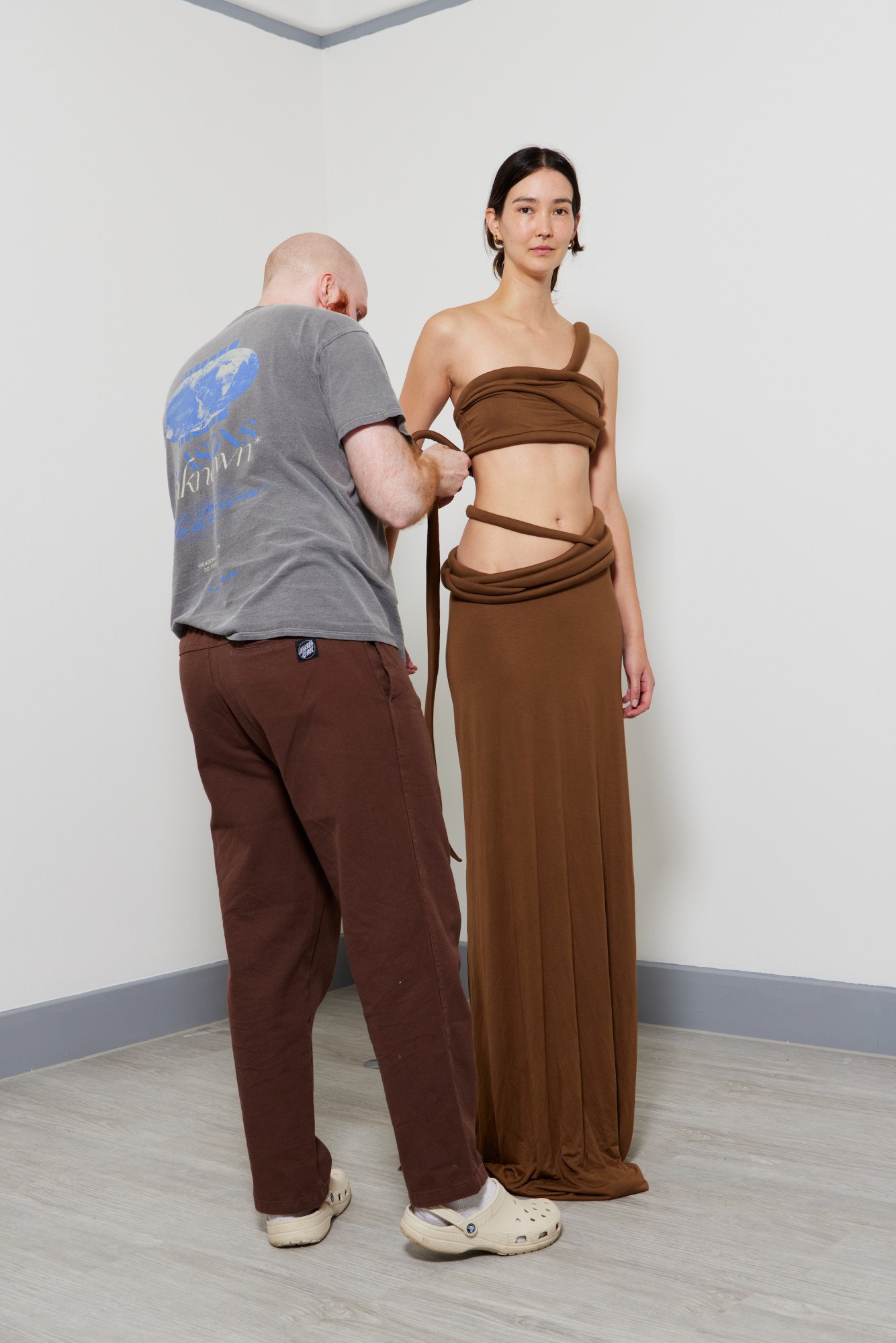

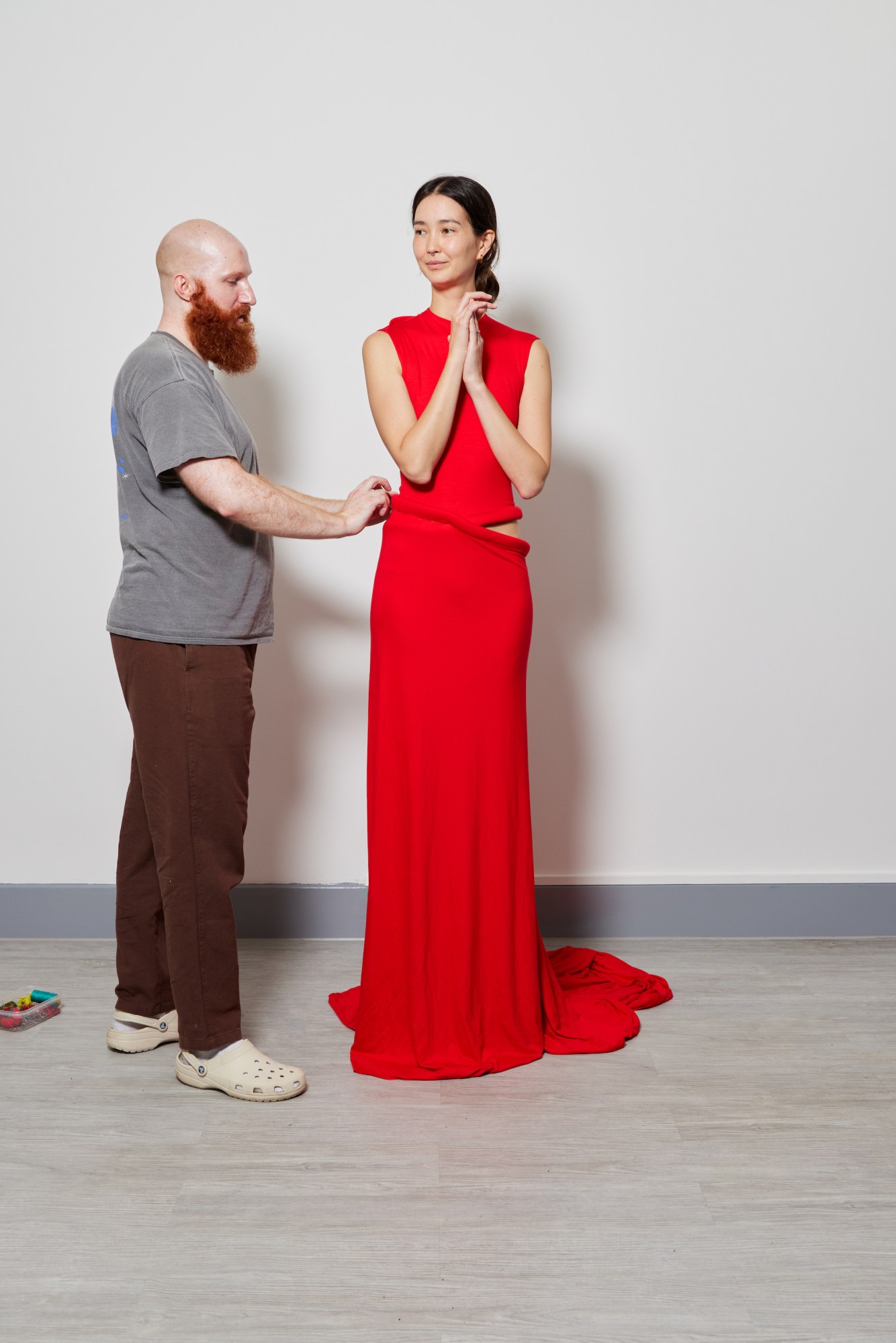
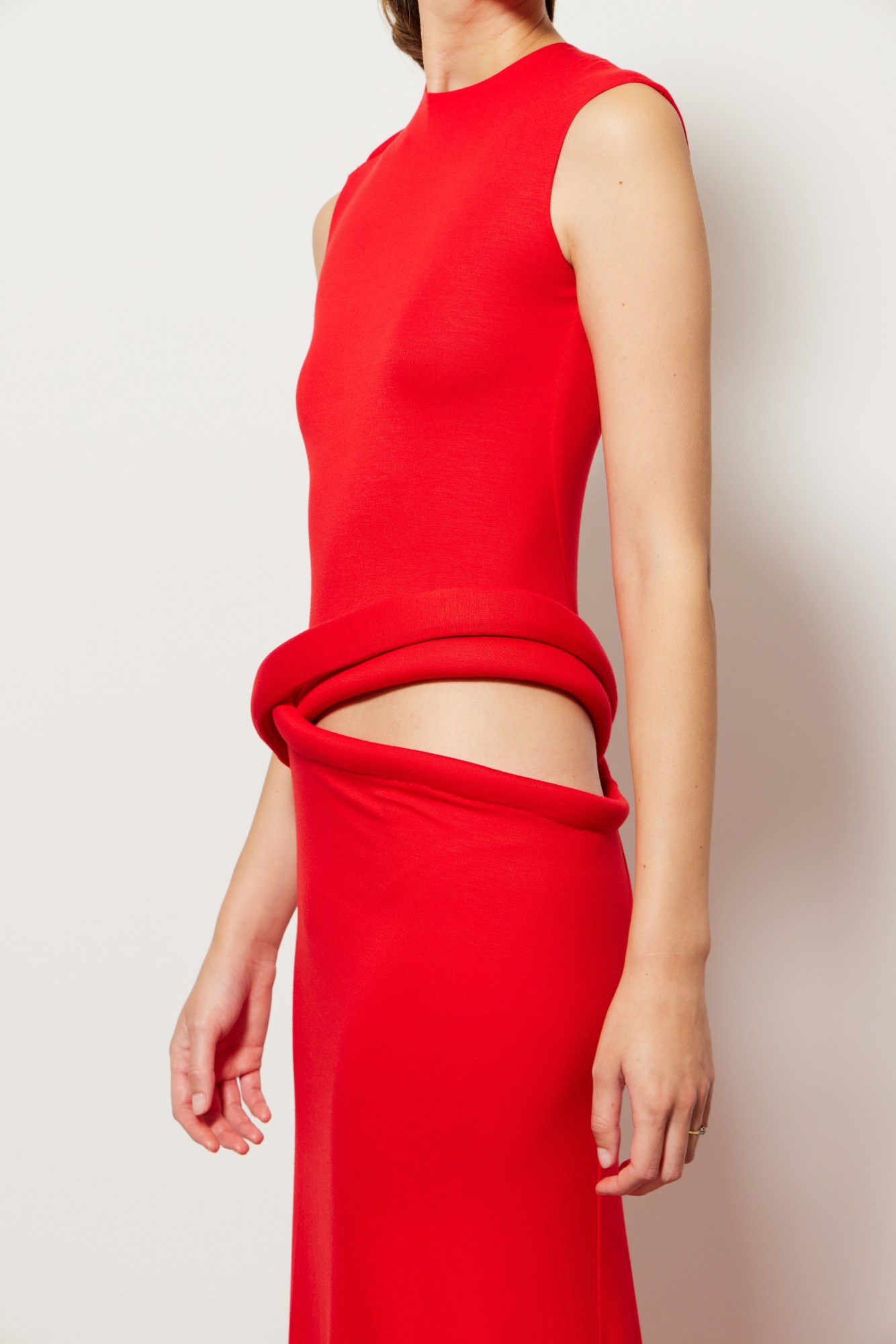
Standing Ground
In the process books of most fashion designers, you typically expect to find a fair few references to, well, fashion. Thumbing the weighty tome that Fashion East debutant Michael Stewart – and RCA alum who designs under the alias Standing Ground – however, what’s most conspicuous is the total absence of images that reference the history of the craft in which he’s fast becoming a master. Instead, you’ll see pictures of something far more timeless – millennia-old standing stone formations that dot the countryside of his native Ireland.
“I try not to work with too many references to contemporary fashion, or even to clothes,” he says, snaking padded jersey veins about the hips of columnal jersey gown. “I’d say that this whole collection is a study in jersey. It’s really about imagining these elemental stones as forms, and trying to reimagine what the aesthetics of the cultures that erected them would be like if they had endured.” Indeed, there’s something to Michael’s immaculate jersey evening gowns that situates them beyond the parameters of ‘fashion’ as we most often think of it – a stoic permanence that, if you’ll excuse the pun, really makes them stand their ground.
This ethos serves as the foundation for Michael’s emerging brand, which he founded after three years of working as a menswear designer at a British high street brand. After growing tired and uninspired by his bluntly commercial day job, “two years ago, I started working on things again, and just focused on the craft and skill of it,” he says. “I wanted to challenge myself.”
Though it’s quite likely that this is the first time that you’re hearing about Standing Ground, in London fashion circles, he’s earned a reputation as something of a sleeper hit. His exacting, elegant eveningwear has, for example, regularly been worn by London-based menswear designer Bianca Saunders – a former classmate of his at the RCA – and he also counts designer Sinéad O’Dwyer and i-D’s very own Olivia Singer among his early fans.
What has earned their admiration – and what will continue to draw the attention of countless more to come – is the seeming effortlessness of his work – a quality which, naturally, takes a hell of a lot of effort to achieve. The first step in getting there is taking the body as his point of departure. “I drape everything on the form with cloth, so no pattern references are used,” Michael says, describing his couture-oriented approach. It’s this way of working that allows him to achieve the subtly feminine voluptuousness that his work exudes – the armholes that just droop over the shoulder, like the meniscus of a full-to-the-brim glass; the sensuous dip of a cutout that frames the lower back; the every-so-slightly askew necklines which give silhouettes their hand-poured effect.
They’re details that you need to peer closely at to catch, but they’re ultimately what set Michael’s work apart. “I guess that it’s the little things like that I’m interested in,” he ponders. “It’s also why I think that people who are really interested in design — in different fields — could find themselves drawn to my work. Like, I can see someone who’s a potter, appreciating some of the forms because they’re sculpted in a similar way.”

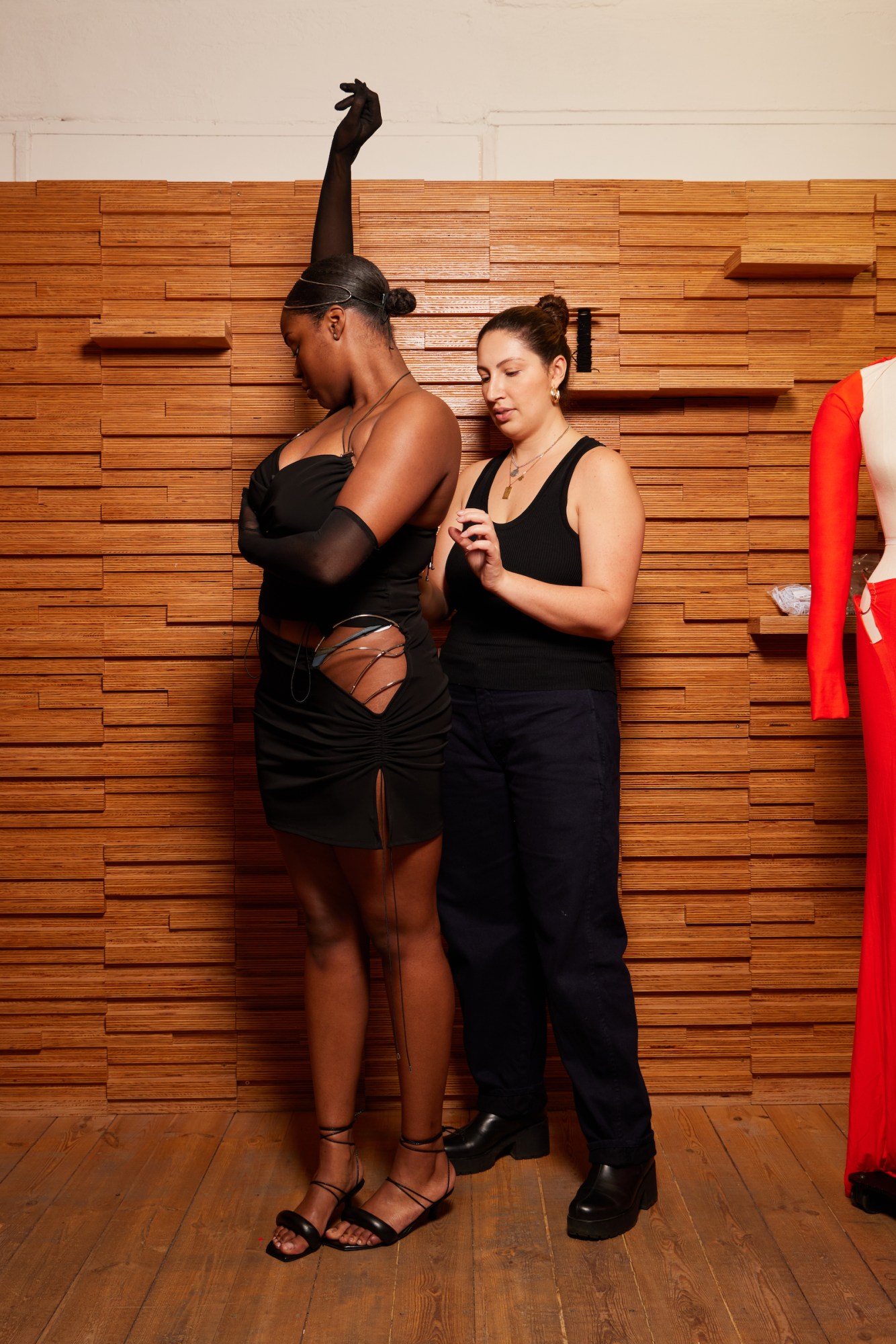
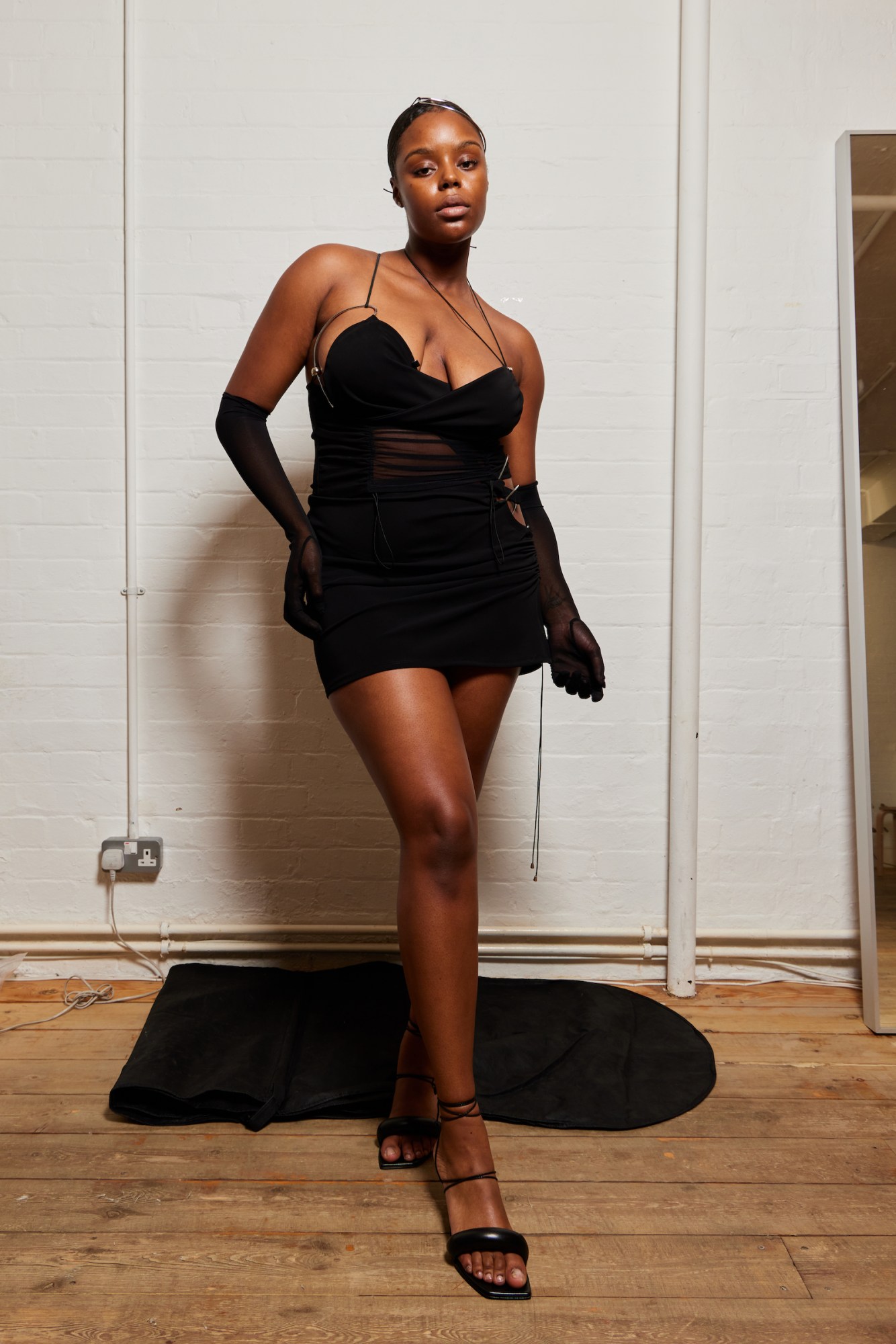
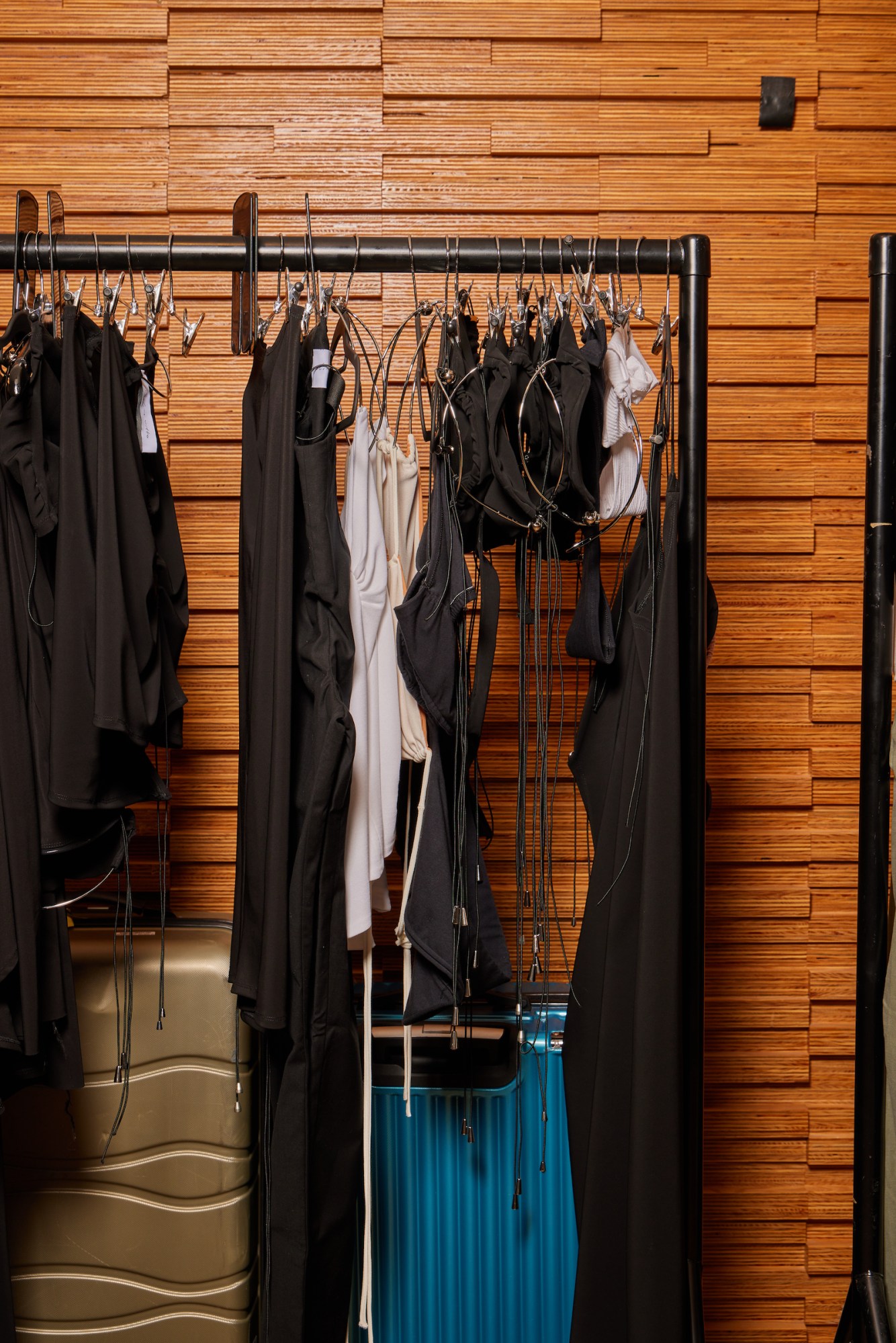
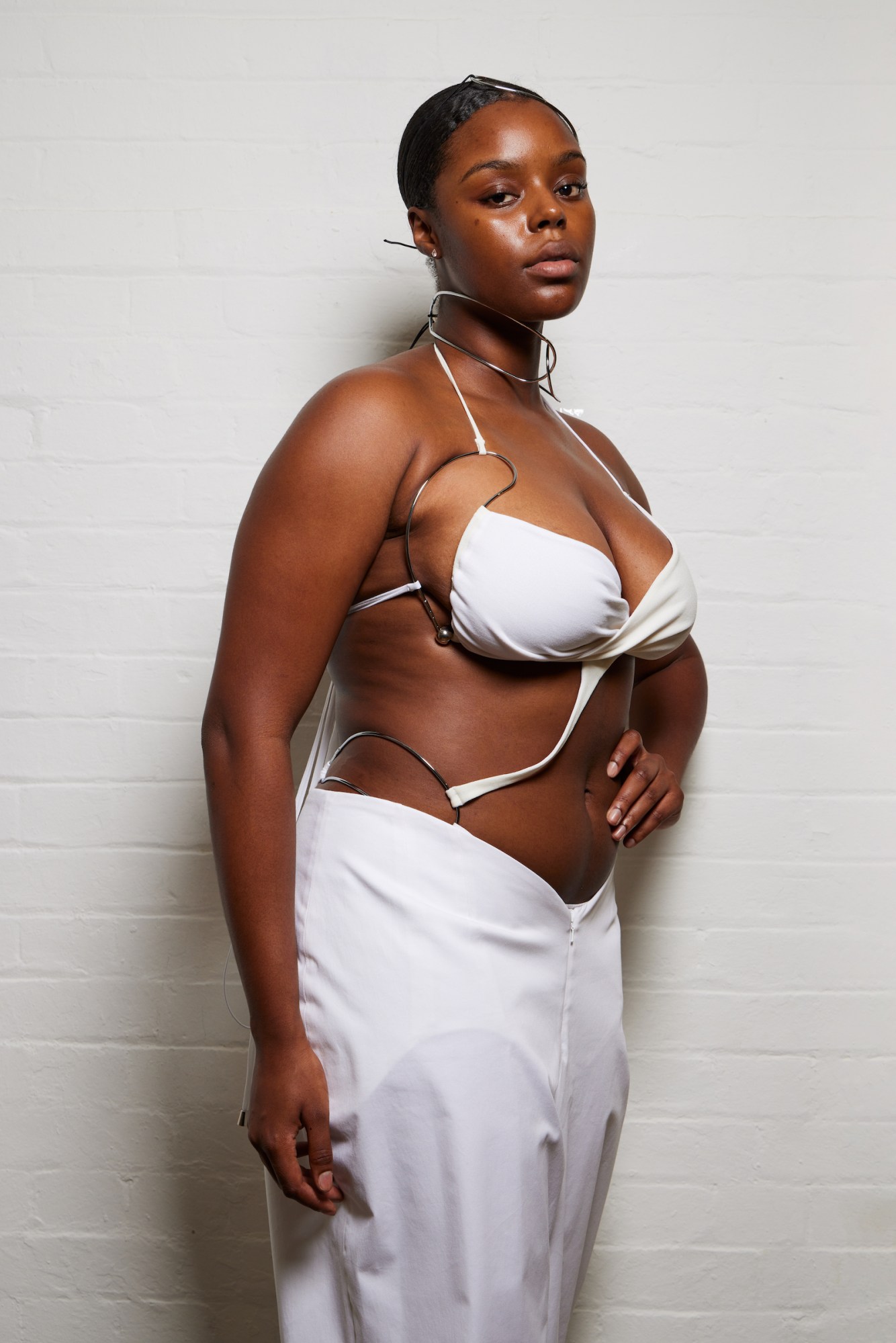
Karoline Vitto
Looking at runways over recent seasons, we’ve started to see a long-overdue increase in the representation of bodies that aren’t sample size. Models like Paloma Elsesser, Precious Lee and Alva Claire are now among some of the most emblematic girls of our time, signifying a necessary sea-change with regard to body diversity. Looking at the rails of almost any high fashion store, however, this encouraging progress fails to convert. In the stores of most luxury brands, sizing rarely goes higher than a UK 14, and even when it does, options remain embarrassingly limited.
Since graduating from the RCA in 2019, Karoline Vitto has made creating clothes that accommodate and celebrate bodies typically excluded from luxury fashion spaces her mission objective. Drawing particular inspiration from the svelte minimalism of the late 90s and early 00s – an era in which particularly exclusionary body standards prevailed – her work adamantly reframes the aesthetic, proving its relevance for a more representative range of body sizes and shapes.
While many designers dedicate their earlier collections to creative exploration without paying much mind to salability, for her first Fashion East collection, Karoline has worked specifically with the end goal of seeing her clothes on shop floors in mind. “I really feel like we’re in a more mature place in terms of product,” she says, gesturing to a rail of monochrome jersey looks, glinting with the brand’s signature curved metal hardware.
Distinctly wardrobe oriented, her intention was to create believable clothes rather than high-concept looks. An effortless, mix-and-match approach makes itself felt in the silhouettes assembled by Nell Kalonji – the stylist Karoline has worked with this season – a way of dressing informed by the designer’s Brazillian upbringing. “I wanted to bring an element of summery floatiness to some of the garments, like the long skirts and baggy trousers. It kind of echoes the way that I wear clothes — something that felt a bit more relaxed” than the bodycon silhouettes we’ve previously seen from the designer. “We then have bikinis and gowns, too… I wanted to be sure you could create combinations like a maxi skirt with a bikini top, which I think is very Brazilian of me, because I grew up wearing a swimsuit underneath everything!”
Just as important as the versatility of the pieces, though, was their universal wearability. “This season, I was really focused on making pieces that could work for different body shapes,” she explains, noting the attention-to-detail that was required to ensure an accurate fit for all. “What I was doing before was very tight, and, even though it was stretchy and there was a bit of flexibility in terms of how it was worn, there wasn’t a lot of range in terms of shape. Here, though, I wanted to create clothes that fitted different proportions,” pointing out the toggle details on the back of trousers and skirts, allowing the waist to be adjusted while keeping the hip measurements intact, and adjustable pulleys on crop tops that allow the intricate systems of curved metal wires and spaghetti straps to comfortably adjust to the wearer’s bust.
Naturally, given the range of bodies that Karoline aims to design for, open dialogue with her impressively large fanbase is crucial to her design process. “For me, it’s really important to just talk to the women that like the brand, and hear what they love — what feels good for them,” she says. “It really fuels me in terms of design.
“As for how people feel when they wear the clothes, I don’t necessarily want to project anything, but when I wear my pieces, I just feel like myself,” she concludes. “I was thinking about it recently, and I realised that the brand is basically like my alter ego — in a way, I’m designing for the 15-year-old Karoline, and what she would have liked to wear, you know?”

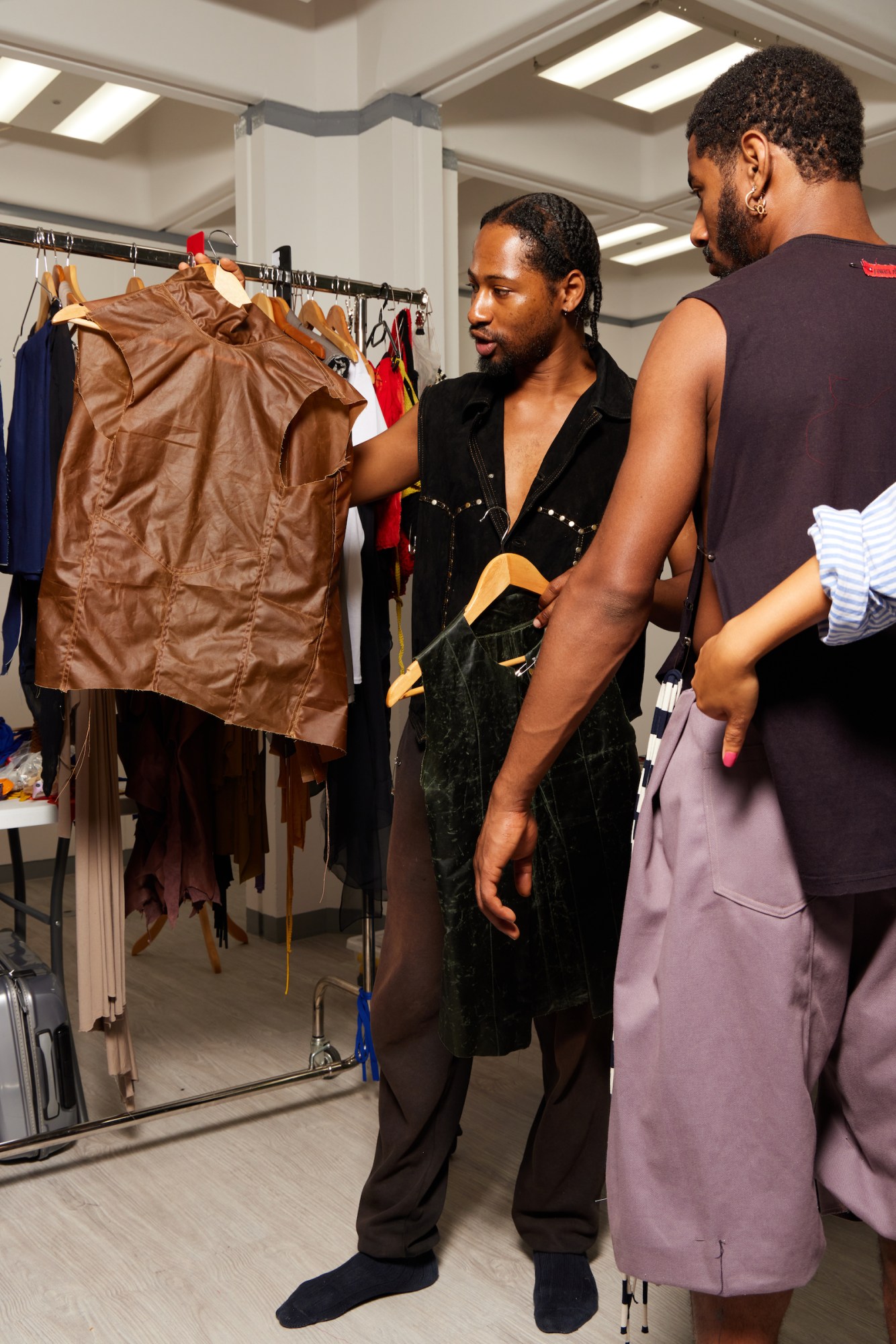




Jawara Alleyne
In the eyes of many, fashion is one of the highest forms of storytelling. If that sounds like your perspective, then a name to have on your radar is Jawara Alleyne. Since graduating from the Central Saint Martins MA in 2020, the Jamaican-Caymanian designer has created a name for the sophisticated eccentricity and narrative impact of his designs. First joining the Fashion East fold in early 2021, this season marks the designer’s fourth and final presentation as part of the talent incubator – true to form, he’s signing off his tenure with a tale of epic proportions.
“Essentially, the collection takes place within a six-second event of a yacht crashing into a pirate ship,” Jawara says. “Three seconds before the crash and three seconds after.” How a six-second boat crash can plausibly result in a fully-fledged fashion collection is, granted, a fair question to ask. For Jawara, though, his focus was less on faithfully translating this tale to cloth and more on interpreting the eclectic energies present at the unfortunate event. “When I was designing, I wasn’t really thinking about individual characters, but rather about the groups of people you’d have seen there,” he continues. “As such, we have the group of people that were on the beach, the group of people that were on the pirate ship, the group of people that were on the yacht, and then the mysticism that binds them together.”
For the landlubbers’ scanty looks, Jawara drew inspiration from the curious parallels that he saw emerge between the dress habits of Londoners during our recent swelterer of a summer and those of the people who live on the islands Jawara hails from. “I looked out my window and everybody was basically wearing bikinis in the streets!” he says. “It really reminded me of how we actually wear clothes on the islands. It has now come to the point where this way of thinking — that it’s just so hot that all you can wear is a bathing suit — has informed how we dress in the city.” A similar logic informed the waxed cotton sleeveless vests worn by the pirates – adapted from diving vest patterns, they’re a result of Jawara’s exploration of urban archetypes (bikers, in this case) “and what those parallels would be in the islands – what kind of garments would represent that same way of thinking and being.”
Storytelling aside, though, this season marks a notable levelling up for Jawara in terms of product offering. Alongside the more artisanally inclined draped pieces – bright gossamer blouses composed of stapled swatches of jersey and chiffon, and jeans kitted out with ramshackle leather bell-bottoms – this season also brings with it upcycled riffs on tailoring, – gauze-covered jackets and slashed formal trousers – and denim jeans fitted with white sailing flag panels.
They’re developments times to coincide with the designer’s first-ever formal sales season, a landmark moment for his young business. “I’m really excited to actually start building relationships with stockists, and to see how wholesalers interpret the brand”, which has, until now, been sold directly to customers, Jawara explains. “Previously, it was really important to just build the story, build the narrative, build the range — to really just know what the brand actually is and how I want to communicate it. Now, I can’t wait to see this story being unravelled and the actual garments now going into stores.” An exciting new chapter for the brand indeed.
Follow i-D on Instagram and TikTok for more fashion reviews.
Credits
Photography Henry Mills
